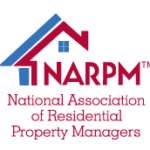Rental Property 2% Rule Explained
John's question: Apparently John's having trouble understanding the 2% Rule.
The 2% rule also called the 2% test or sometimes called the 1% rule. They're not all the same as obviously, there's a big difference between 1% and 2%, but they're basically a general test and only a general test. It's a quick way of analyzing a real estate deal on the fly. And the reason why you need to analyze a real estate deal on the fly is because you get so many deals coming at you that you need to have a general quick rule, a quick way of assessing it to see if it actually makes sense to purchase that property or not, other than crunching the numbers on each and every deal.
You would literally be spending eight hours a day crunching the numbers if you don't have some quick off of the flyway to assess it. That doesn't mean you actually purchase the property and that you commit to a sale. It just means this property might meet your criteria and it's worth a more involved in depth look.
So, the 2% rule, or the 1% rule, is basically you would take the rent price and divide that by the purchase price. If you believe you're going to get a thousand dollars of rent, and that's a safe bet and a property's going to cost a hundred thousand dollars to buy, then that meets the 1% rule. Again, it's just a guideline, but for the most part, it's really going to be tough to find a property that does better than 2% rule in this current market. Also, it's really tough to actually get a property that's going to cash flow, and that's what this is.
It's basically not showing you the equity, it's showing you that these properties will hopefully cash flow if you're getting them to match those numbers. Therefore, anything beneath 1% very likely isn't going to cash flow for you for quite some time. Cash flow is important because basically, it is what keeps you safe investing in real estate; it's paying your bills. Equity is what's making you wealthy. Cash flow is what's actually keeping you safe, paying for repairs and making extra cash on a monthly basis.
I would probably recommend avoiding any property that comes underneath 1%. If you can get anything over 2%, you probably hit the jackpot. Now, it's just not as simple as that, dividing the $1,000 of rent that you're hoping to get for $100,000 that it's going to cost you to buy the property. That a hundred thousand dollars has to include the purchase price of the property, all the purchase cost of buying that property, and any renovation.
So if you're buying a shell property that $100,000 would have to be the purchase of the property, let's say $50,000. And just offer a cuff you say, okay, this property looks like it needs another $50,000 in renovation. That puts an ultimate cost of this property $100,000. I'm going to divide the rent $1,000 by the $100,000 investment. At that point, if the property meets that 1% rule or better, then it probably means that you should sit down and crunch the numbers on it and see if it makes complete and total sense across the board.
This is Joe White answering your real estate questions the very best I can. Good luck!!!






